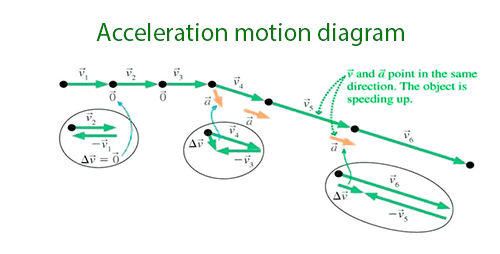Acceleration Calculator
Calculate Acceleration Using Velocity, Time, or Distance
📋How to Use the Acceleration Calculator?
-
Enter the initial and final velocity or distance and time.
-
Select the proper units for all the variables.
-
Press the "Calculate" button will give you the acceleration values.
Enter the initial velocity (v_i), final velocity (v_f), and the time (t) it took to change speed. You can also solve for acceleration using distance or force and mass.
Select your units (meters, feet, seconds, etc.) and click "Calculate". The tool will provide the acceleration in meters per second squared (m/s^2). This solver is designed for physics students and automotive engineers who need to analyze motion dynamics and rates of change.
Useful Tips💡
-
Check units (m/s for velocity, seconds for time) before any calculations.
-
Use accurate real data to produce realistic acceleration numbers.
Mistakes to Avoid ⚠️
- Using distance and time instead of change in velocity - acceleration is Δv/Δt, not s/t.
- Entering initial and final velocity in km/h without converting to m/s.
- Forgetting the sign - deceleration should be negative.
- Thinking average acceleration equals average speed divided by time.
How Acceleration Calculator works?
To make the calculations, either use the appropriate formulas like (1) a = (vf - vi) / t, (2) a = 2 * (d - vi * t) / t2, or (3) a = F / m. With that said, these formulas are physics calculation formulas that are based on Newton's laws. Each of these formulas will be set up to produce accurate calculations for the speeding up of the object.
Make sure to keep the units consistent throughout your calculation and error in any unit will affect the calculation result.

Practical Applications📊
-
Assessing vehicle performance by calculating an speeding up measurement when a car is driven.
-
Measuring the acceleration of a sprint effort to achieve optimal periods of rest/work in athletic training environments.
-
Analyze object motion in physics experiments for precise results.
Questions and Answers
What is acceleration?
Acceleration is the rate of change of the velocity of an object as a function of time. It is commonly expressed in meters per second squared (m/s²). Acceleration expresses the rate at which an object speeds up, slows down, or changes direction, according to Newton's second law. You can obtain acceleration from things like cars, or athletes in motion studies, with our physics calculator.
What is an acceleration calculator?
An acceleration calculator calculates how fast an object's velocity is changing through values like velocity, time, or distance. It helps you understand how to calculate speed up in physics, in situations like car motion, athletic performance, and experimental situations. It helps you get numbers right, and is especially helpful for students and professionals in physics who have analysis of motion dynamics.
What is the unit of acceleration?
The standard SI unit is meters per second squared (m/s^2), which means "meters per second, per second".
What is the difference between speed and acceleration?
Speed is how fast you are going; acceleration is how fast your speed is changing.
Can acceleration be negative?
Yes. Negative acceleration is called deceleration, meaning the object is slowing down or accelerating in the opposite direction of its motion.
How do I find acceleration from force?
Use Newton's Second Law: a = F / m. Divide the net force (Newtons) by the mass (kilograms).
how do you find acceleration from a velocity-time graph?
To find the speed up from a velocity time graph, you calculate the slope of the line which is calculated by a = (v_f-v_i)/t. Entering these values into the calculator will derive average hastening in meters per second squared (m/s²). This is also a great way to map out trends during a motion scenario in your physics lab, where the calculations will give you confidence in results concerning a dynamic system and the data collected.


